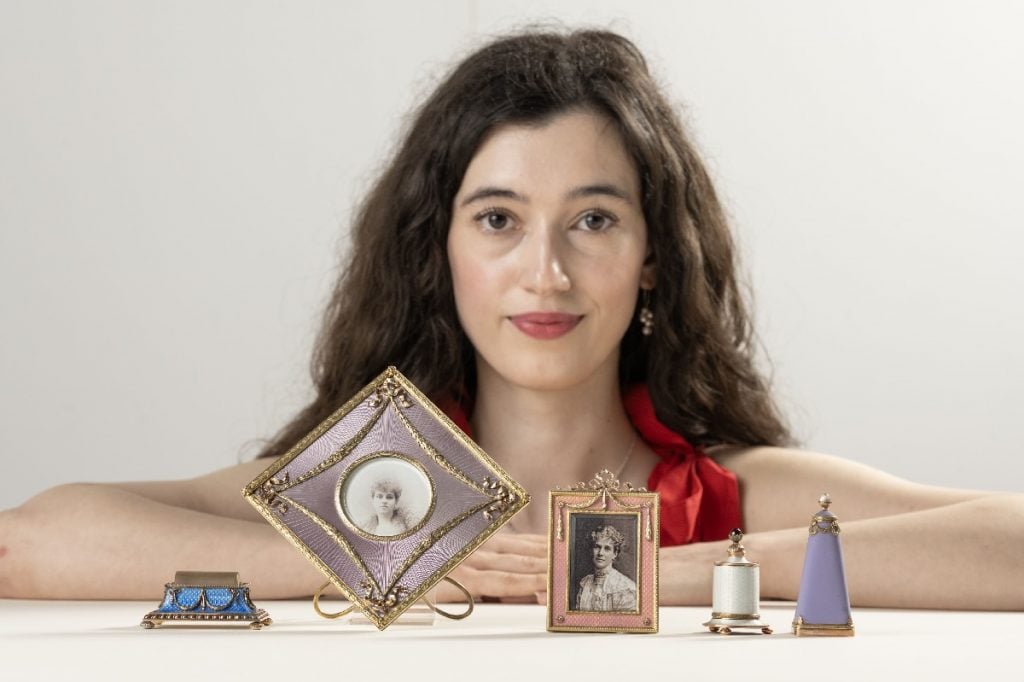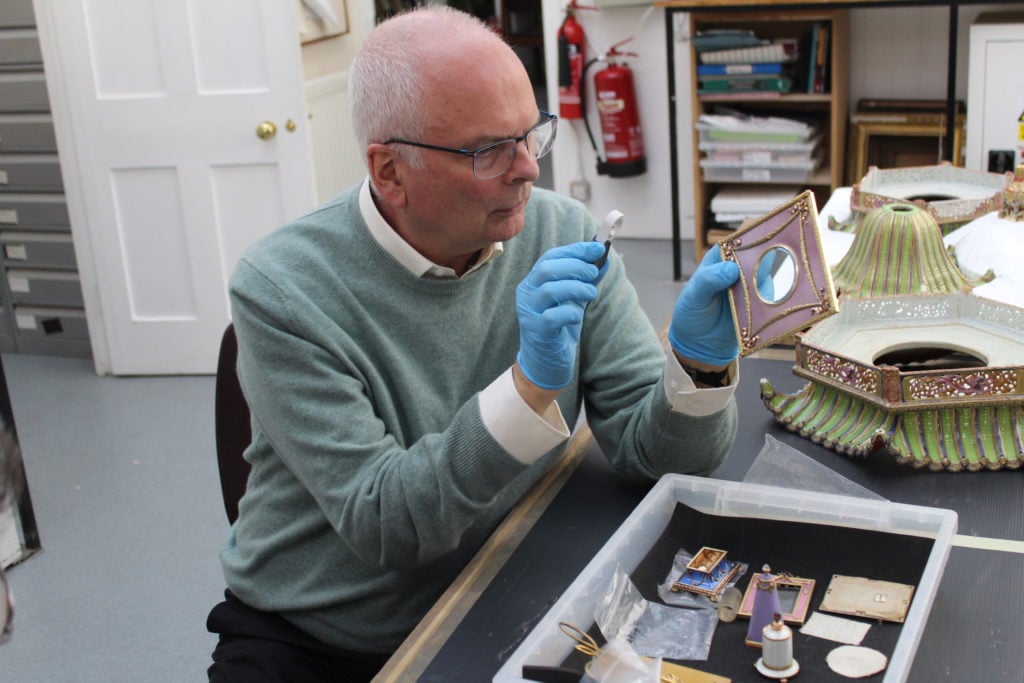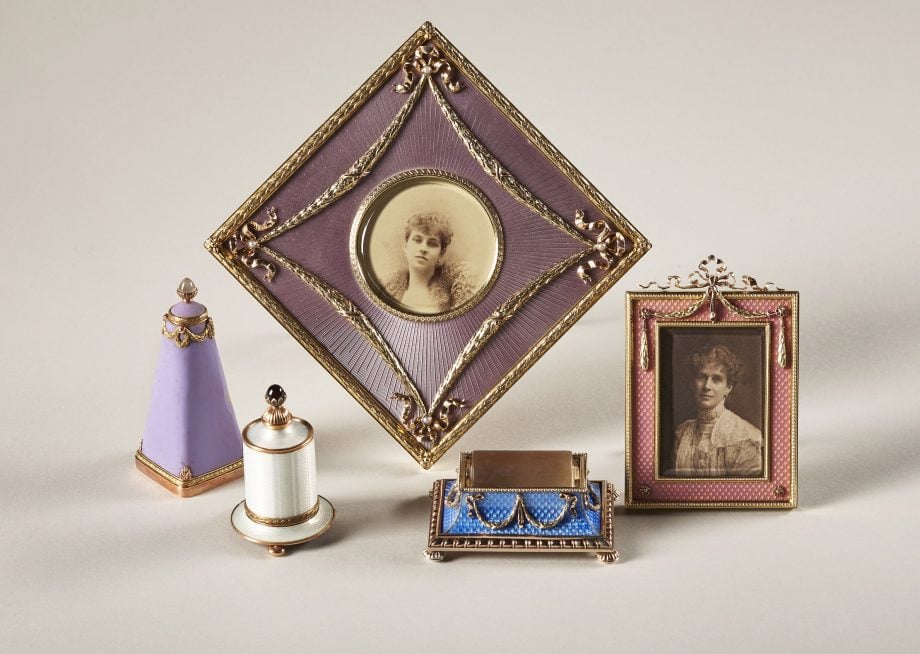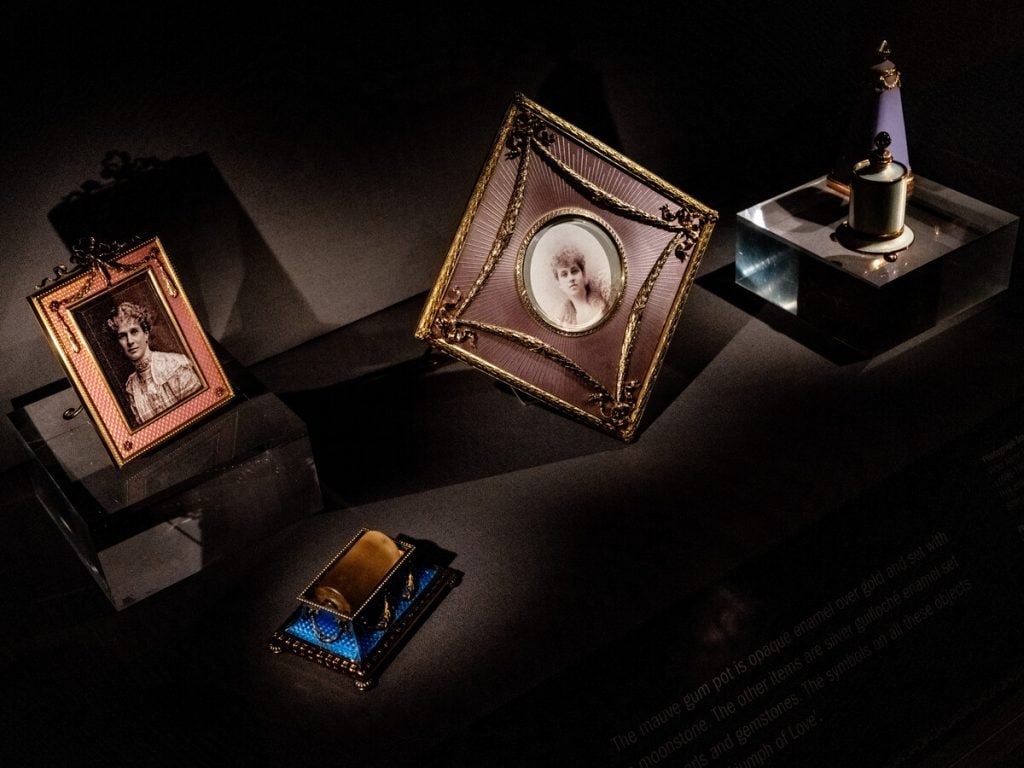Museums & Institutions
Amateur Sleuth Solves Mystery Behind U.K. Museum’s Fabergé Frames
The frames were rediscovered in museum storage in 2019.

An actor-turned-sleuth has solved a Fabergé mystery at the Brighton Museum and Art Gallery, helping the U.K. museum identify two women pictured in a pair of rediscovered frames in the collection.
In the light purple frame is Sophia of Prussia, Queen of Greece and granddaughter of Queen Victoria. In the smaller pink frame is Maria Perugia—not a noble, just married to the exceedingly wealthy Leopold de Rothschild.
The ornate antiques were a relatively recent discovery for the museum, spotted in storage in 2019 by Geoffrey Munn, a fine jewelry expert for Antiques Roadshow. (He identified a $1.27 million Fabergé flower on the British TV show in 2017.)
A mere corner of the light purple frame was poking out of the tissue paper when Munn was walking through the store rooms. Nevertheless, he immediately clocked that it was the work of Peter Carl Fabergé, famed jeweler to the imperial Russian court.

Geoffrey Munn with a cache of rediscovered Fabergé objects from the Brighton Museum & Art Gallery. Photo courtesy of the Brighton and Hove Museum.
“As soon as the cabinet was opened and the paper lifted, my hunch was confirmed by the entirety of an important, gold-mounted Fabergé photograph frame in translucent, purple enamel—important enough to imply some sort of royal, if not imperial provenance,” Munn told Country Life.
“Next to it was another, smaller, but equally beautiful example in rose pompadour enamel. Furthermore, this splendid little cache of Fabergé included two enameled gum pots, one with moonstone finial, the other with a garnet,” he added. “There was also a faintly preposterous objet de luxe in the form of a stamp damper, complete with a rock-crystal roller.”
The exquisite collection appears to have come to Brighton Museum from nearby Preston Manor. The historic home was once owned by Ellen Thomas-Stanford, an heiress who was friends with Queen Victoria’s daughter Princess Beatrice, and may have received the Fabergé objects as gifts. (Her stepson Henry Vere Benett was a spy in St. Petersburg during the Russian revolution in 1917, and wrote of his efforts to buy jewelry for her as a souvenir.)

The Fabergé objects from the collection of Brighton and Hove Museum. Photo by Tessa Hallmann, courtesy of Brighton and Hove Museum.
The pieces, believed to be worth over £1 million ($1.27 million) were covered in dust and grime from decades of accumulated tobacco smoke and lamp soot. Before putting them on view, the museum carried out a careful cleaning and conservation.
What wasn’t as simple was solving the mystery of the woman in the two frames.
That’s where Andreane Rellou came in, visiting the museum from London during an exhibition of the Fabergé finds back in 2021. She was intrigued by a sign inviting museum-goers to help figure out who was in the photographs.
“I used my knowledge of historical fashion and hairstyling to try and date the pictures myself,” Rellou said in an interview with the museum. She looked through debutant portraits and marriage records for wealthy and royal couples to help crack the case.

The Fabergé objects from the collection of Brighton and Hove Museum. Photo courtesy of Brighton and Hove Museum.
It took about four hours to match the woman in the pink frame to photos of Perugia. The purple frame was more of a challenge, requiring three day’s research.
Previously, Munn’s theory was that the woman in purple might have been the mother of Prince Philip, Princess Alice of Battenberg, a great-granddaughter of Queen Victoria. (Princess Alice was both sister-in-law and first cousin-once-removed to Sophia of Prussia, having married her brother Prince Andrew of Greece and Denmark.)
Putting a name to the faces in the antique frames was extremely satisfying for Rellou.
Though she doesn’t have any detective experience, she does do art historical research as part of her work as a screenwriter and actor. Her current project aims to highlight the overlooked contributions of Marie Spartali Stillman, Aglaia Ionides Coronio, and Maria Cassavetti Zambaco to the Pre-Raphaelites. The three Anglo-Greek cousins were artists and models known as “The Three Graces.”
“I’m endlessly fascinated by women whose achievements have been forgotten, and the kind of historical and detective work it takes to bring them back,” Rellou said.





